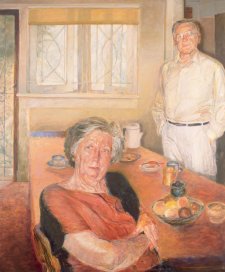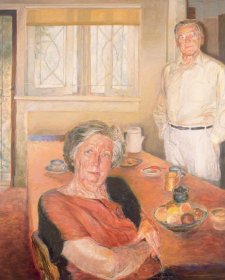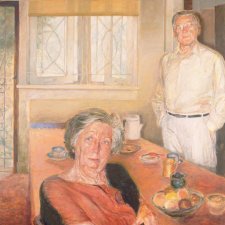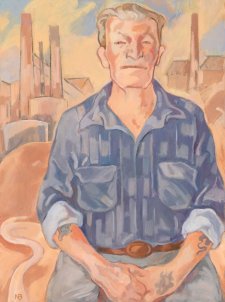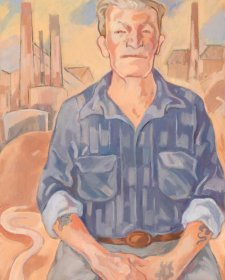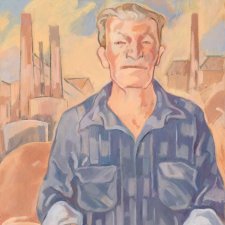Nancy Borlase AM (1914–2006), painter and writer, was born in New Zealand, and had to be dug out of the wreckage when an earthquake struck Napier in late 1931. At 21 she moved to Christchurch and worked part-time designing lampshades while taking night classes in sculpture at the Canterbury College School of Art. Arriving in Sydney in 1937 with just £2, she studied sculpture at East Sydney Technical College, modelling for artists, cleaning, waitressing and babysitting to pay her rent, but soon turned to painting. In 1940 she went to Melbourne, where she co-led an artists' models' strike for better pay and conditions. After marrying trade unionist Laurie Short, she moved back to Sydney, had a daughter and worked as a waitress at the Trocadero Café, while continuing to paint in a figurative style. She joined the Contemporary Art Society and regularly exhibited with them in the 1940s. During an overseas trip with Short in 1956, she saw the work of Pollock, de Kooning and Rothko in New York, and on her return to Sydney painted many vibrant abstracts. One of these was acquired by the Art Gallery of New South Wales in 1960, the year of her first solo exhibition at Macquarie Galleries. In 1988 the same gallery purchased a self-portrait she had painted in 1943; in 1994, she received a substantial 'meritus award' from the Australia Council. Portraits she painted in the 1990s, subjects of which included the socialist activist Issy Wyner and the seaman Pat Mackie, were characteristically flat and graphic, almost cartoonish in style. She finally took out the Portia Geach Memorial Prize in 2000 with just such a work, a double portrait of Sydney sisters, Vida and Marie Breckenridge, who were both artists and researchers. Also an art critic, between 1973 and 1981 Borlase wrote for the Bulletin and the Sydney Morning Herald. Borlase said of her life as a painter, 'It has been a long, slow haul, but I got there.'
- About us
- Support the Gallery
- Venue hire
- Publications
- Research library
- Organisation chart
- Employment
- Contact us
- Make a booking
- Onsite programs
- Online programs
- School visit information
- Learning resources
- Little Darlings
- Professional learning
